The four main transport methods are ROAD, RAIL, SEA and AIR.
All these methods are selected for different reasons with sea freight being the cheapest and is considered the most eco-friendly, but it takes a lot longer than the other options partly due to delays at port and time taken to unload the ships.
Temperature ranges
There are standard temperature ranges used in the logistics industry which vary slightly in different parts of the world but broadly speaking they are as follows:
- Deep-freeze: below -15°C to -20°C
- Refrigerator: 2°C to 8°C;
- Cold or cool: 8°C to 15°C;
- Room temperature/ambient: 15°C to 25°C.
So your products will need to be kept within one of these temperature ranges. Obviously there will be some products that must not be frozen so we need to protect against this in certain scenarios.
So what is the best way to transport goods that must be maintained within a defined temperature range?
Refrigerated transport
You could pay for refrigerated transport of course, and this may be necessary due to the types of goods being transported. This is particularly appropriate for sea freight where goods could be travelling for weeks through different climates. But it is expensive for several reasons. The link below to an article gives some insights into comparative costs between dry and refrigerated containers.
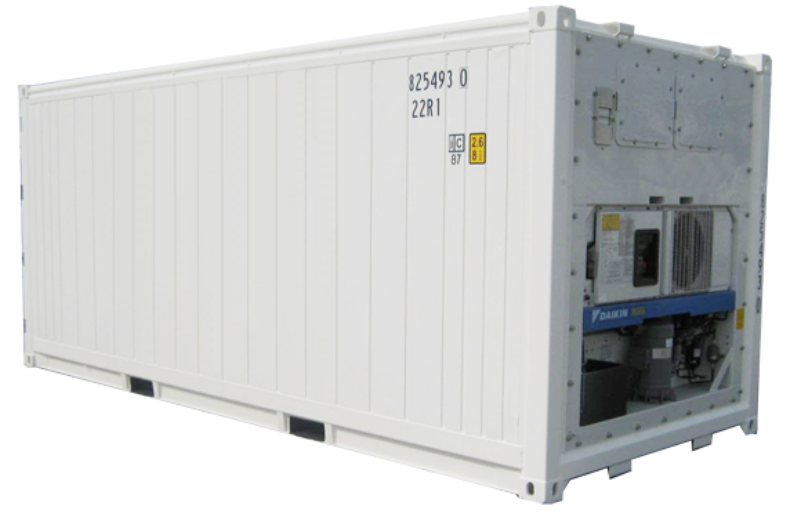
Refrigerated shipping container
Refrigerated air freight
As a rough guide, an air freight LD3 refrigerated container will cost around 4 times as much as a standard container; travelling from London to New York a refrigerated air freight container will cost around $7,500 to rent one way.
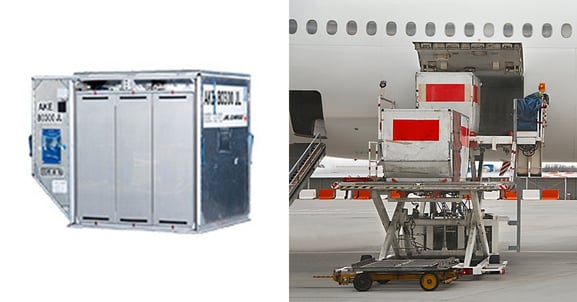
Refrigerated LD3 air freight container
Refrigerated road transport
The cost of transporting a pallet by road in a refrigerated truck to a destination in the UK is roughly double the cost of shipping by regular pallet network. I have no comparative costs for rail freight, but it would be safe to assume you will pay a premium for refrigerated rail transport.
So where are we going with this?
Well, we have several customers who use thermal covers (or thermal liners) combined with gel ice packs to protect temperature sensitive goods during transport, as it works out significantly cheaper, especially with air freight.
However, this thermal protection has a limited time span as the gel ice packs will gradually melt and lose their cooling effectiveness.
Air freight worldwide typically takes up to 72 hours to reach its destination which can include unloading and loading during transit. During these changeovers, the palletised load or containers will almost certainly be exposed to direct sunlight.
Road transport within the UK, and possible into Europe could ensure delivery within 72 hours, therefore a combination of foil covers and gel ice packs will provide adequate protection even in very hot weather.
If you are transporting goods overseas via shipping containers, which typically will take several weeks from door to door, then a foil cover combined with gel ice packs is not going to provide the protection needed for chilled goods.
However, if you have goods that may be affected by extremes of temperature, and thermal foil cover will smooth out the temperature spikes thereby avoiding the extremes and protecting goods.
The number of days outside a controlled environment
If you are shipping using refrigerated transport then this is a controlled environment. So we are talking about keeping product cool (or warm) without mechanical assistance.
Therefore the number of days outside a controlled environment is be kept to a minumum and will be determined by the length of time the goods are in transit for.
As discussed HERE, shipping by sea is cheaper and more eco-friendly than transporting by air, but you are looking at 6 - 12 weeks in transit with delays being frequent. Road or air freight could be up to 72 hours depending on destination and number of transhipments en-route.
Shipping containers when exposed to direct sunlight will become very hot in the daytime and cool down during the night.
The graphs below show what temperature brown painted and white painted shipping containers reached inside when the outside ambient temperature was 25°C.
With both containers, for about 12 hours the temperature exceeded 25°C inside the container. A thermal barrier would significantly slow the rate of temperature increase during the day keeping the average temperature lower.
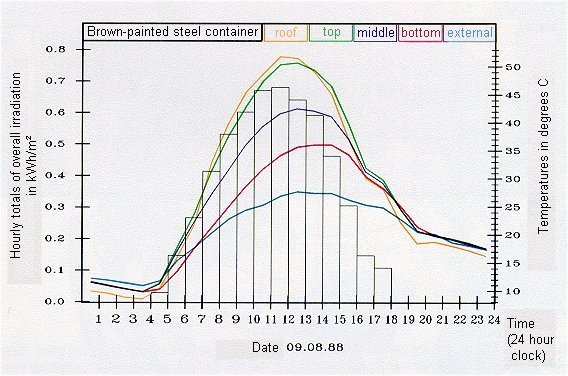
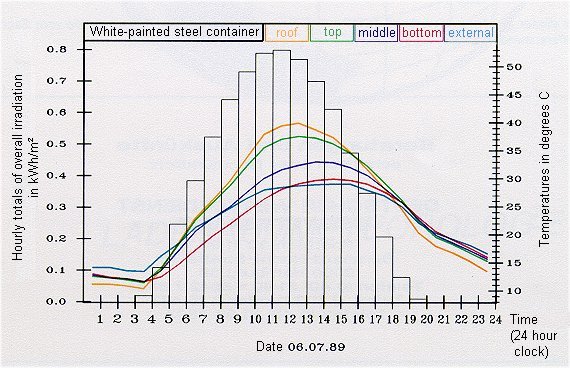
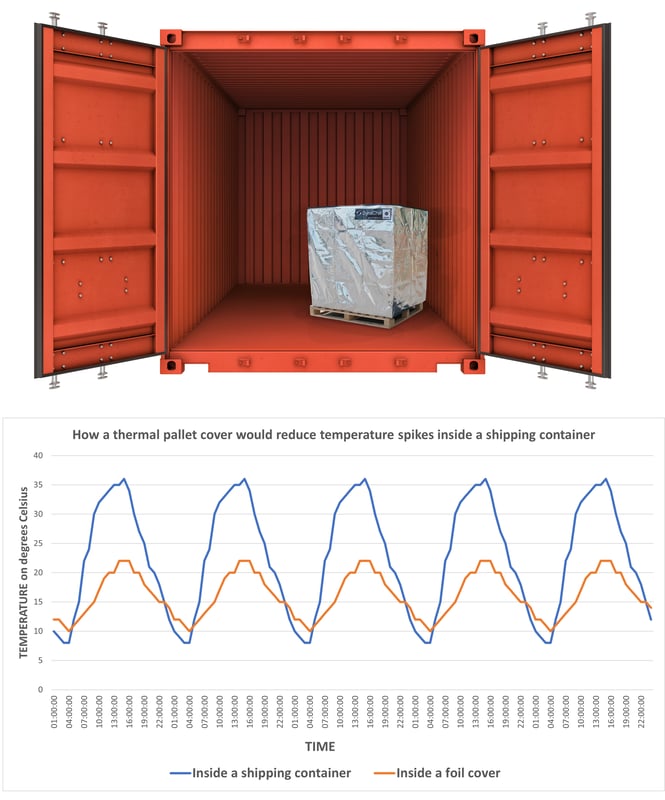
To create a thermal barrier you could utilise either thermal pallet covers for individual pallets, or a shipping container thermal liner which will reduce the amount of heat (thermal energy) reaching the goods. See the image below.
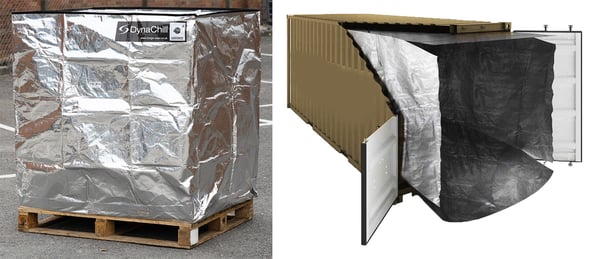
Air freight
As an alternative to refrigerated air freight containers, we have customers who put a thermal foil liner inside the container as shown below.
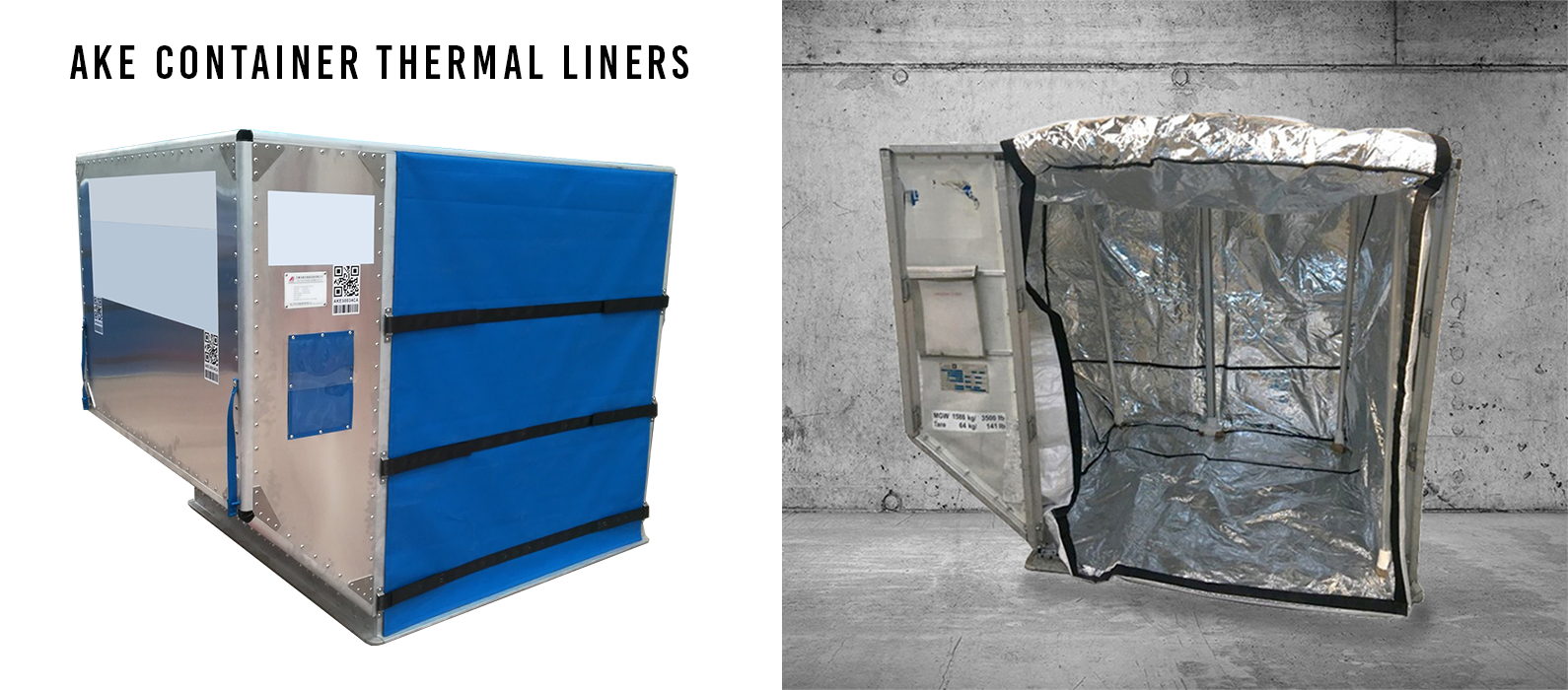
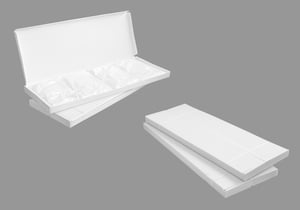 These are then lined with gel ice packs which keep the goods cool for at least 72 hours.
These are then lined with gel ice packs which keep the goods cool for at least 72 hours.
The illustration below shows how the white boxes that contain 5 kilos of gel packs are placed around the boxes of goods to ensure complete thermal protection.
This works out significantly cheaper than using a refrigerated air freight container.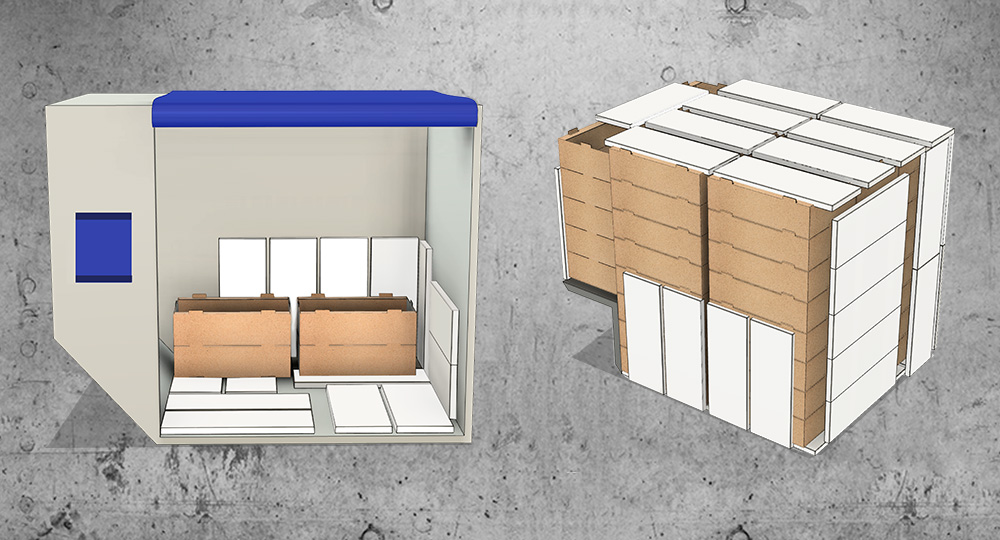
Road transport
Transporting goods by road will usually utilise standard pallets to carry the goods.

Transporting temperature sensitive goods on pallets is usually done by refrigerated trucks.
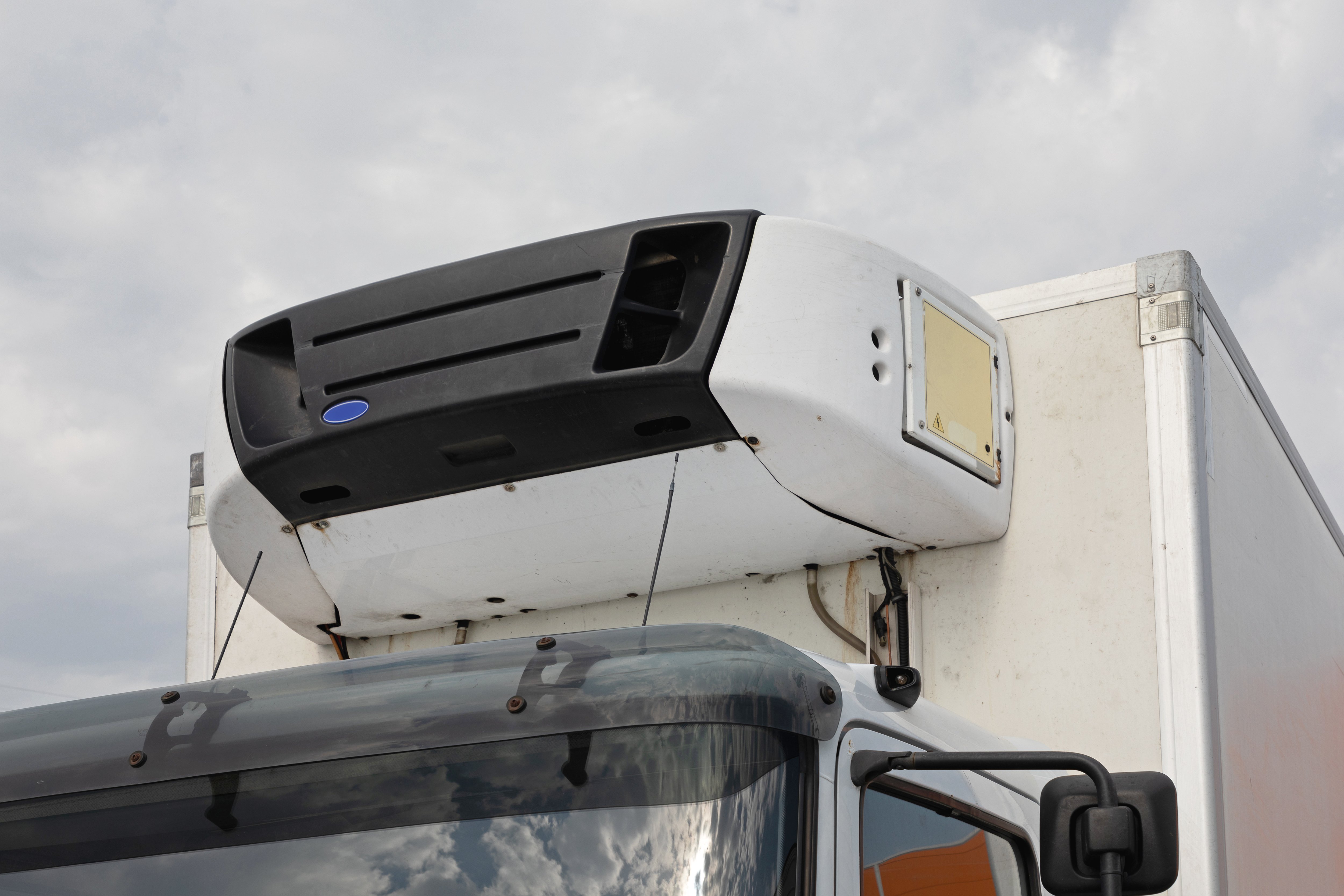
However, for more flexibity, and to ensure goods are protected in the event of mechanical failure of refrigeration units, or when goods are being moved between temperature controlled environments, and could be exposed to heat from the sun, then thermal covers combined with gel ice packs will provide reliable thermal protection.
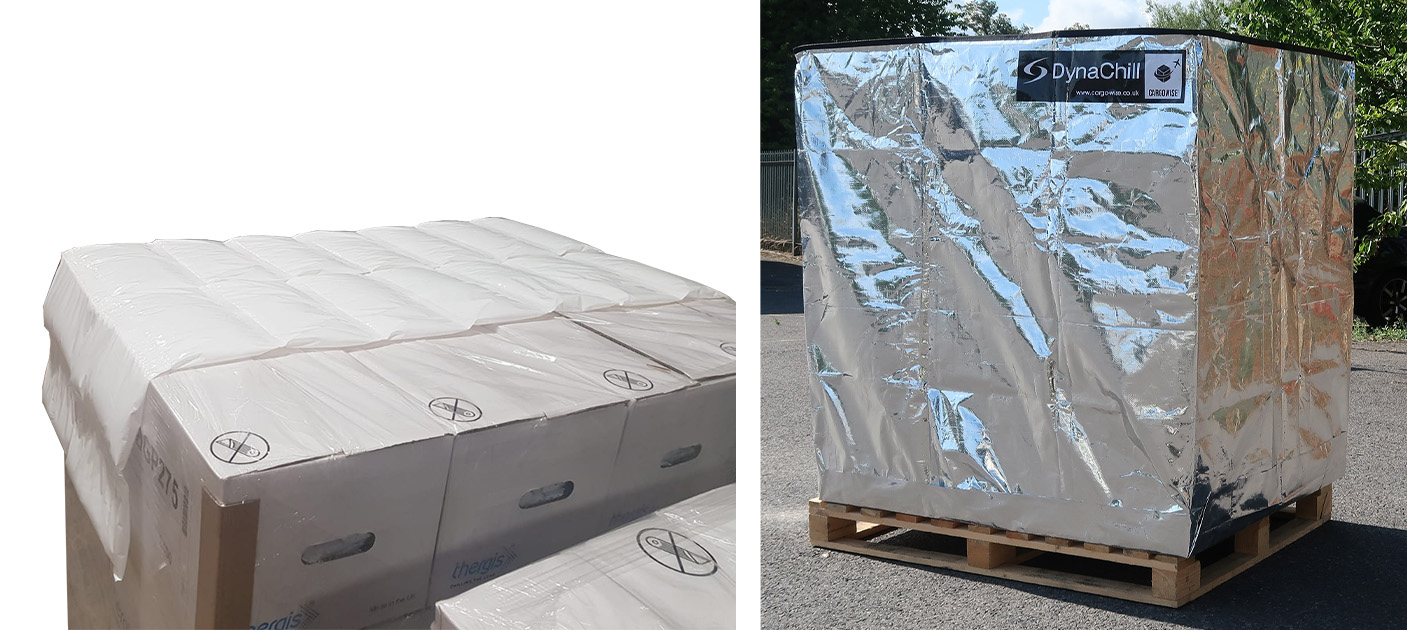
We can help advise with regard to any particular temperature control transport issues, so if you have any questions please contact us.

